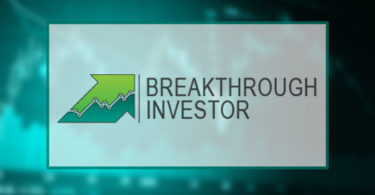The Wall Street Journal recently ran a long story about how investors should think about risk.
It described four options in detail: Sharpe ratio, Sortino ratio, downside capture ratio and Morningstar risk ratings.
The first three listed are technical measures you calculate if you’re a hedge fund manager. Only the fourth measure – the Morningstar risk rating – is remotely relevant to the average investor.
Now, I’ve been a professional investor for most of my career.
And, yes, I’d calculate these Sharpe and Sortino ratios for funds that I was managing. Yet I have never calculated the Sharpe or Sortino ratio for my personal portfolio.
That’s because it turns out there is a far better way to think about risk.
[Extra: Discover Over 65 Lucrative Work-Free Income Secrets Revealed in New Book]
And one that makes it significantly easier to adjust your portfolio risk to account for your risk tolerance.
Let me explain…
How to Invest $100,000
Say you have $100,000 in cash.
In the investing world, there is an implicit assumption that you need to be 100% invested 100% of the time.
You’d measure your risk by what you invest in.
At one extreme, you could invest $100,000 in a single biotech stock.
At the other extreme, you could invest $100,000 in the Oxford Endowment Portfolio – diversifying your assets across a wide range of asset classes: U.S. and foreign stocks, bonds and commodities.
Both of these strategies assume that you have to be fully invested. Both assume that you need to risk – that is – invest all $100,000.
Few investors stop to question this assumption. And yet, they should.
[Discover: How You Can Easily Earn 70 Times More Interest on any FDIC Insured Account]
A New Way to Think About Risk
Here’s how I would approach investing $100,000.
Think of your base case as $100,000 in cash.
If you are convinced the world is heading to hell in a handbasket, keep your portfolio all in cash.
If you just want to test the waters in investing, think about any amount you invest as reducing your cash holding.
No. 1: A Low-Risk Approach: Say you invest $10,000 in an S&P 500 index fund and keep $90,000 in cash.
If the S&P 500 market crashes 30%, where will your portfolio stand?
Well, your $90,000 will still be in cash. Your $10,000 in the S&P 500 will have dropped by $3,000 to $7,000.
So your investment portfolio will be worth $97,000.
Not great. But not the end of the world either.
But also look at the flip side. This time, the S&P 500 rallies 30%.
What will your portfolio look like now?
Your $90,000 will still be worth $90,000. And your $10,000 bet on the S&P 500 will be worth $13,000.
So your investment portfolio will be worth $103,000.
This is far short of the 30% you could have made had you been fully invested in the S&P 500. But you sleep well at night, knowing that you are virtually immune to the next market crash.
[Bonus: Earn Micro-Royalties From Tech Giants and Other Work-Free Income Generators]
No. 2: A Higher-Risk Approach: Say you are willing to take on more risk. You can split your $100,000 evenly.
That is, you keep $50,000 in cash and invest $50,000 in the S&P 500.
Let’s look at two different outcomes.
After a 30% crash in the S&P 500, your portfolio would be worth $85,000 ($50,000 cash plus $35,000 invested).
After a 30% rally, your portfolio would be worth $115,000 ($50,000 cash plus $65,000 invested).
Different levels of risk. Different outcomes.
The lesson?
By thinking of your portfolio in cash versus noncash terms, you can adjust your level of risk.
Investors Are All Different
Describe this approach to a traditional investment manager, and he or she will think you are “irrational.”
After all, the money you keep in cash forgoes the long-term annual gain of 10% or so in the S&P 500.
[Extra: Discover Over 65 Lucrative Work-Free Income Secrets Revealed in New Book]
And as Warren Buffett observes, “Never ask a barber if you need a haircut.”
Here’s what investment managers don’t get…
People are different. And each person has a different risk preference.
Some prefer the safety of holding a lot of cash. Others want to swing for the fences.
Take my 81-year-old mother. She has an insane appetite for risk.
She invested massively after the market crash of 1987. She also invested heavily after all subsequent market crashes. This aggressive approach to investing allowed her to retire early.
Even today, most of her holdings are in big technology wholly “inappropriate” given her age. Her longtime holding in Apple (Nasdaq: AAPL) accounts for a massive amount of her retirement portfolio. And she still invests on margin in accounts where she can.
The secret to her investment success?
First, she has a massive risk tolerance.
Second, she doesn’t follow the market closely enough to be shaken out by Mr. Market’s mood swings.
Third, she has invested throughout a secular bull market, where “buying on the dip” always worked.
Over her investing life, she took big risks and has been rewarded for it.
But here’s the thing…
Few 81-year-olds are wired the way my mother is. What is appropriate for her is far from appropriate for most investors.
The bottom line?
Learn to think about your investment risk in terms of cash versus noncash holdings.
And make sure your allocation between the two is in line with your tolerance for risk.
This single decision about how much of your money to put at risk by investing is far more important than what you invest in.
[Free Book: Act Now as Supply is Limited and Demand is High For This Exciting Offer]
Good investing,
Nicholas


Leave a Comment